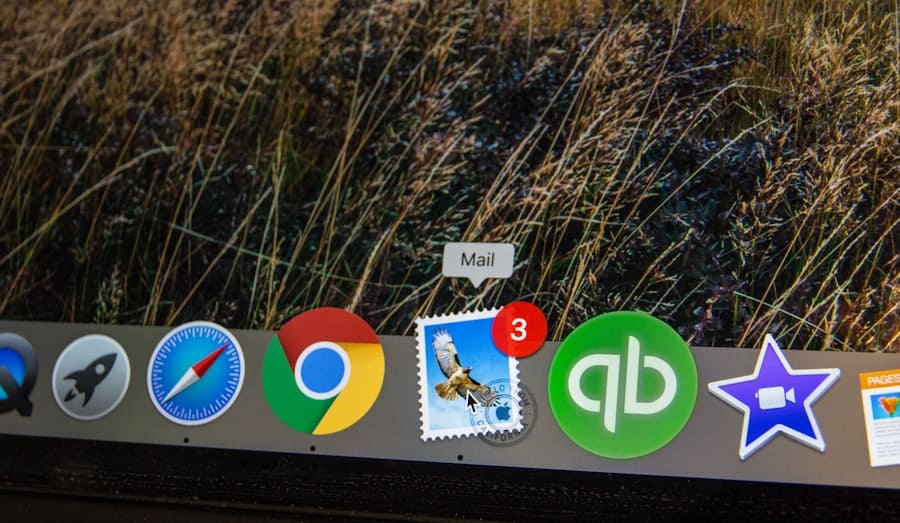Key Takeaways
- Crafting compelling subject lines is crucial for grabbing the attention of your audience and increasing open rates.
- Segmenting your email list allows for targeted campaigns that are more relevant and personalized to specific groups of recipients.
- Designing mobile-friendly email templates is essential as a large portion of email opens occur on mobile devices.
- Implementing A/B testing helps optimize campaign performance by testing different elements to see what resonates best with your audience.
- Personalizing email content increases engagement by making recipients feel like the message was tailored specifically for them.
The importance of the subject line
When it comes to email marketing, the subject line is your first and often only chance to make an impression. You want to create a subject line that not only grabs attention, but also compels the recipient to open the email. Think of it as the headline of a news article; it needs to be engaging and informative.
A well-crafted subject line can significantly increase your open rates, so it’s essential to invest time in this aspect of your campaign. Use action-oriented language that evokes curiosity or urgency. Phrases like “Don’t miss out!” or “Exclusive offer just for you!” can create a sense of immediacy that encourages recipients to click.
Moreover, consider the length of your subject lines. Research suggests that shorter subject lines tend to perform better, especially on mobile devices where screen space is limited. Aim for around 6-10 words to ensure your message is clear and impactful.
Additionally, incorporating personalization—such as the recipient’s name or location—can make your subject line feel more tailored and relevant. This small touch can significantly enhance engagement, making your audience feel valued and more likely to open your email.
Click to contact Teracore to help you with your email marketing campaigns >
Segmenting Your Email List for Targeted Campaigns
Segmentation is a powerful strategy that allows you to tailor your email campaigns to specific groups within your audience. By dividing your email list based on various criteria—such as demographics, purchase history, or engagement levels—you can create targeted campaigns that resonate more deeply with each segment. This approach not only improves the relevance of your content, but also enhances the overall effectiveness of your marketing efforts.
For instance, if you have a segment of customers who frequently purchase fitness products, you can send them tailored promotions or content related to health and wellness. In addition to improving engagement rates, segmentation can also lead to higher conversion rates. When recipients receive emails that speak directly to their interests and needs, they are more likely to take action. They are also less likely to consider your email as spam.
You might consider using behavioral data to inform your segmentation strategy. For example, if a customer has recently browsed a particular product category on your website, sending them an email featuring those products can create a seamless shopping experience. By understanding your audience better through segmentation, you can foster stronger connections and drive more meaningful interactions.
Designing Mobile-Friendly Email Templates

A significant portion of emails is opened on mobile devices. Therefore, designing mobile-friendly email templates is a necessity. A responsive design ensures that your emails look great and function well on any device, whether it’s a smartphone, tablet, or desktop computer.
Start by using a single-column layout that makes it easy for readers to scroll through your content without feeling overwhelmed. Large buttons and clear calls-to-action are essential for mobile users who may be navigating with their fingers. Additionally, pay attention to font sizes and image resolutions.
Text should be large enough to read without zooming in, and images should be optimized for quick loading times. Remember that mobile users often have limited time and attention spans, so keep your content concise and engaging. Use bullet points or short paragraphs to break up text and make it easier to digest.
By prioritizing mobile-friendly design, you not only enhance user experience but also increase the likelihood of conversions from your email campaigns.
Implementing A/B Testing to Optimize Campaign Performance
A/B testing is an invaluable tool in the realm of email marketing. It allows you to experiment with different elements of your campaigns to determine what resonates best with your audience. By sending two variations of an email—such as different subject lines, layouts, or calls-to-action—to a small segment of your list, you can analyze which version performs better, before rolling it out to your entire audience. This data-driven approach helps you make informed decisions that can lead to improved open rates and conversions.
When conducting A/B tests, it’s crucial to focus on one variable at a time, to accurately assess its impact. For example, if you’re testing subject lines, keep the content and design consistent across both emails. After gathering sufficient data, analyze the results to identify trends and preferences among your audience.
This iterative process not only enhances the effectiveness of your current campaigns but also provides valuable insights for future strategies. By continuously testing and optimizing your emails, you can stay ahead of the curve and ensure that your marketing efforts yield the best possible results.
Personalizing Email Content for Increased Engagement
Personalization goes beyond simply addressing recipients by their names; it involves tailoring content based on individual preferences and behaviors. By leveraging data from previous interactions—such as past purchases or browsing history—you can create highly relevant content that speaks directly to each recipient’s interests. For instance, if a customer frequently buys outdoor gear, sending them personalized recommendations for new arrivals in that category can significantly enhance their engagement with your brand.
Moreover, consider using dynamic content within your emails that changes based on the recipient’s profile or behavior. This could include personalized product suggestions, location-based offers, or even birthday discounts. The more relevant and tailored your content is, the more likely recipients are to engage with it.
Personalization fosters a sense of connection between you and your audience, making them feel valued and understood. As a result, this approach can lead to increased loyalty and higher conversion rates over time.
Utilizing Automation for Timely and Relevant Messaging

Email automation is a game-changer in the world of digital marketing, allowing you to send timely messages without manual intervention. By setting up automated workflows based on specific triggers—such as sign-ups, abandoned carts, or customer anniversaries—you can ensure that your audience receives relevant content at the right moment. For example, if someone signs up for your newsletter, an automated welcome email can introduce them to your brand and set expectations for future communications.
Additionally, automation enables you to nurture leads through targeted drip campaigns that guide them through the customer journey. By delivering valuable content at each stage—whether it’s educational resources for new subscribers or special offers for loyal customers—you can keep your audience engaged and encourage them to take action. The beauty of automation lies in its ability to deliver personalized experiences at scale, freeing up your time while still maintaining meaningful connections with your audience.
Analyzing and Leveraging Email Analytics
To truly understand the effectiveness of your email marketing efforts, you must dive into analytics. Metrics such as open rates, click-through rates, conversion rates, and unsubscribe rates provide valuable insights into how well your campaigns are performing. By regularly analyzing these metrics, you can identify trends and patterns that inform future strategies.
For instance, if you notice a decline in open rates over time, it may be time to revisit your subject lines or segmentation strategies. Furthermore, leveraging analytics allows you to measure the impact of specific campaigns on overall business goals. Are certain types of emails driving more sales?
Are there particular segments of your audience that consistently engage more? By answering these questions through data analysis, you can refine your approach and allocate resources more effectively. Ultimately, understanding and leveraging email analytics empowers you to make data-driven decisions that enhance the performance of your campaigns.
Building and Nurturing Customer Relationships through Email Marketing
Email marketing is not just about promoting products; it’s about building lasting relationships with your customers. By consistently delivering valuable content—whether it’s educational articles, exclusive offers, or personalized recommendations—you can foster trust and loyalty among your audience. Consider creating a series of welcome emails for new subscribers that introduce them to your brand’s values and offerings, while providing useful information that enhances their experience.
Additionally, nurturing relationships through email involves actively engaging with your audience beyond promotional messages. Encourage feedback through surveys or polls, respond promptly to inquiries, and celebrate milestones such as anniversaries or birthdays with special offers or messages. By showing genuine care for your customers’ needs and preferences, you create a community around your brand that encourages repeat business and referrals.
In essence, effective email marketing is about creating meaningful connections that go beyond transactions; it’s about cultivating relationships that stand the test of time.
If you are interested in enhancing the security of your email marketing campaigns, you may want to consider implementing a password manager like LastPass. This tool can help protect your sensitive information and prevent unauthorized access to your email accounts. To learn more about how password managers work and why they are important for cybersecurity, check out this informative article on password managers.
Need assistance with your marketing? Click here to contact Teracore today! >
FAQs
What is email marketing?
Email marketing is a digital marketing strategy that involves sending promotional messages, product updates, or educational content to a group of people via email. It is a cost-effective way for businesses to communicate with their customers and prospects.
What are the benefits of email marketing?
Some of the benefits of email marketing include reaching a targeted audience, building customer relationships, driving sales, and providing valuable content to subscribers. It is also a measurable and cost-effective marketing channel.
How does email marketing work?
Email marketing works by collecting email addresses from potential customers and sending them targeted messages. This can be done through opt-in forms on websites, lead magnets, or by collecting email addresses at events or in-store.
What are some best practices for email marketing?
Some best practices for email marketing include personalizing messages, segmenting your email list, creating mobile-friendly designs, and testing different elements such as subject lines and call-to-action buttons.
What are some common types of email marketing campaigns?
Common types of email marketing campaigns include promotional emails, newsletters, welcome emails, abandoned cart emails, and re-engagement campaigns. Each type serves a different purpose in engaging with subscribers and driving action.
What are some email marketing metrics to track?
Some important email marketing metrics to track include open rate, click-through rate, conversion rate, bounce rate, and unsubscribe rate. These metrics can help you understand the effectiveness of your email campaigns and make data-driven decisions.



